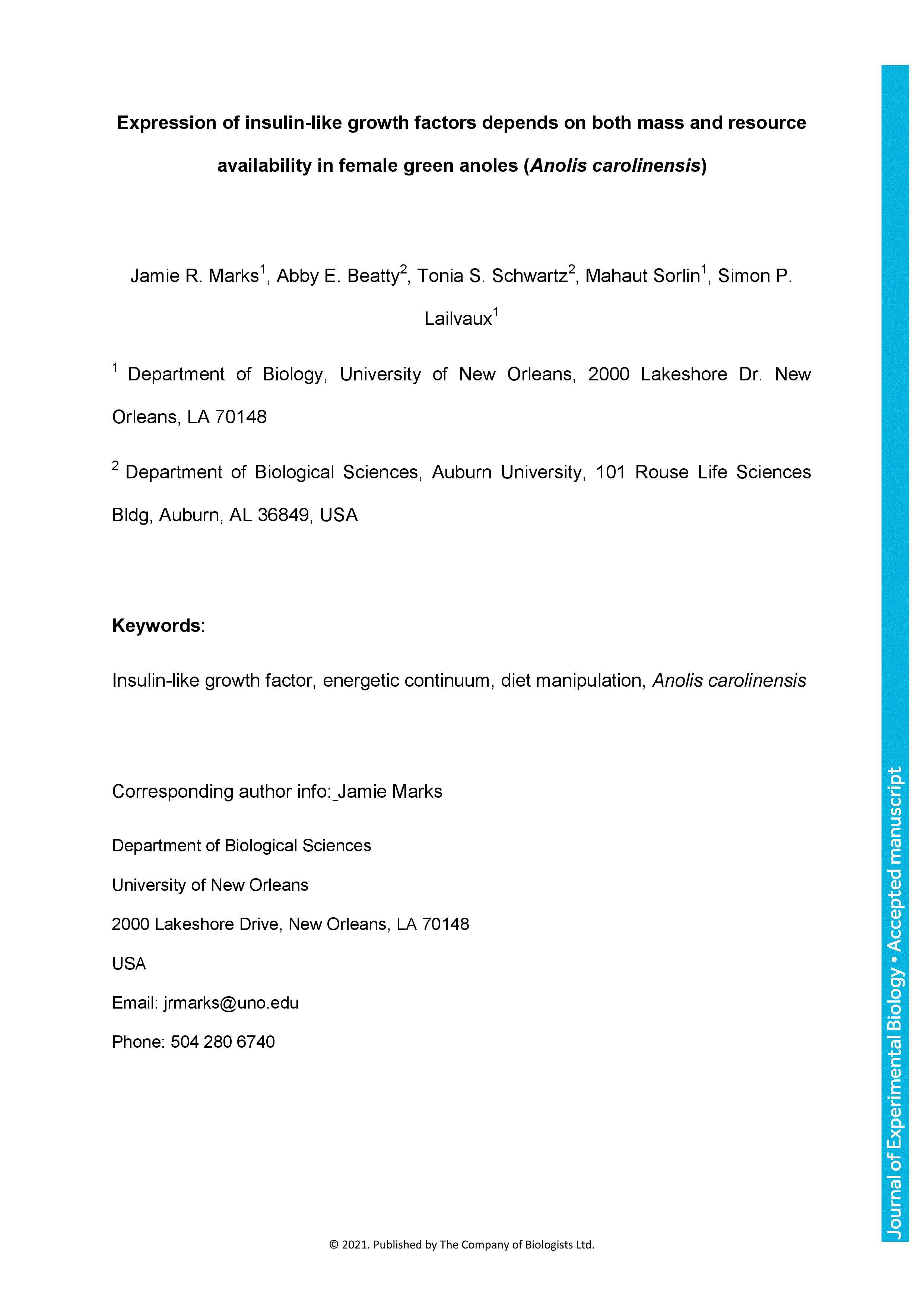The insulin and insulin-like signaling (IIS) network is an important mediator of cellular growth and metabolism in animals, and is sensitive to environmental conditions such as temperature and resource availability. The two main hormones of the IIS network, insulin-like growth factor 1 (IGF1) and insulin-like growth factor 2 (IGF2), are present in all vertebrates, yet little is known regarding the responsiveness of IGF2 in particular to external stimuli in non-mammalian animals. We manipulated diet (low quantity of food or high quantity of food) in adult green anole (Anolis carolinensis) females to test the effect of energetic state on hepatic gene expression of IGF1 and IGF2. The absolute expression of IGF2 in female green anoles is 100X higher than IGF1 regardless of diet treatment, and IGF1 and IGF2 expression interact with post-treatment body mass and treatment, as do the purported housekeeping genes glyceraldehyde 3-phosphate dehydrogenase (GAPDH) and eukaryotic elongation factor 2 (EEF2). The Low Diet group showed a negative relationship between body mass and gene expression for all genes, whereas the relationships between body mass and gene expression in the High Diet group were either absent (in the case of IGF1) or positive (for all other genes). After accounting for total change in mass the Low Diet group expressed IGF2, GAPDH and EEF2 at higher levels compared to individuals in the High Diet group of similar ▵ mass. These results illustrate that expression of IGF1 and IGF2, and housekeeping genes are affected by energetic status in reptiles.
Expression of insulin-like growth factors depends on both mass and resource availability in female green anoles (Anolis carolinensis)
Currently Viewing Accepted Manuscript - Newer Version Available
Jamie R. Marks, Abby E. Beatty, Tonia S. Schwartz, Mahaut Sorlin, Simon P. Lailvaux; Expression of insulin-like growth factors depends on both mass and resource availability in female green anoles (Anolis carolinensis). J Exp Biol 2021; jeb.242665. doi: https://doi.org/10.1242/jeb.242665
Download citation file:
Advertisement
2023 JEB Outstanding Paper Prize shortlist and winner

The JEB Editors are delighted to announce the shortlisted authors for the 2023 JEB Outstanding Paper Prize. Read the winning paper - Tiny spies: mosquito antennae are sensitive sensors for eavesdropping on frog calls - by Hoover Pantoja-Sanchez and Brian Leavell from Ximena Bernal's lab at Purdue University, USA.
JEB Science Communication Workshop for ECRs

If you’re an early-career researcher interested in science communication and are attending the SEB Annual Conference in Prague this summer, come a day early and join the JEB Editors at a sci comm workshop to learn the key writing skills needed to promote your research to a broad audience beyond your peers (1 July at 14.30-17.30). Places are limited to 24 attendees, and applicants should apply through the SEB registration page by 30 April 2024.
Bridging the gap between controlled conditions and natural habitats in understanding behaviour

Novel technologies enable behavioural experiments with non-model species, in naturalistic habitats and with underexplored behaviours. In their Commentary, Scholz and colleagues discuss how to obtain a deeper understanding of the natural ecology and lifestyle of study animals.
Beluga metabolic measures could help save species

To help save animals from extinction, it’s important to understand what each species needs to survive. This led Jason John et al. to measure the metabolic rates of captive belugas to develop a ‘fish calculator’ showing that the whales need to eat ~23 salmon per day.
ECR Workshop on Positive Peer Review

Are you an ECR looking for tips on how to write concise, astute and useful manuscript reviews? If so, join the JEB Editors at a 2-hour JEB-sponsored Workshop on Positive Peer Review at the Canadian Society of Zoologists annual meeting in Moncton on 9 May 2024 at 13.00-15.00. There are 25 spaces for ECRs and selection is first come, first serve. To sign up, check the ECR Workshop box when you register for the CSZ meeting.



